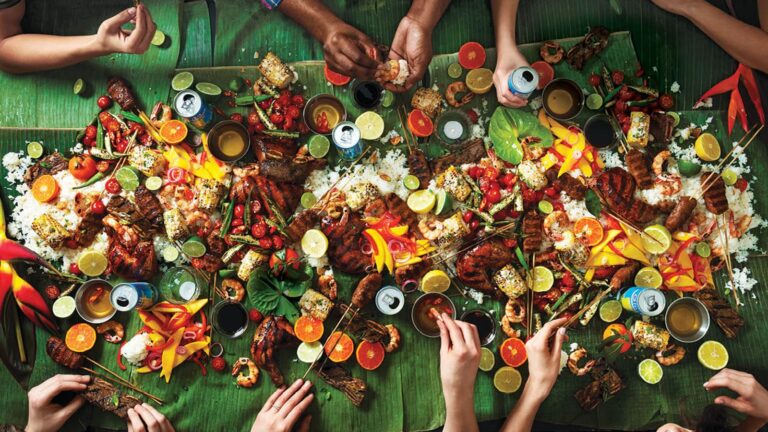
The holidays have once again come and gone. They were a time for family, fun, and, of course, lots of food! So, in the spirit of these festivities, I will write about Philippine foods and how they play a pivotal part in not only connecting the people of the Philippines but also the nations that interact with them. First, we will look at Philippine cuisine’s fusion and adaptive nature. Next, we will discover some of the most popular dishes. Finally, we will go over the significance of food to the Philippines’ culture and how they connect many people.
Philippine food is considered “one of the world’s earliest fusion cuisines” (“The Philippines Cuisines”). This is due partly to the fact that the Philippines has a large fusion of cultures. The country itself is one of the world’s largest archipelagos, so the people of each island or region have different resources and ingredients to make food. On top of this, Philippine food is heavily influenced by the nations that have colonized or traded with the Philippines. Many dishes have Spanish, Chinese, Japanese, and even American roots or ingredients. In addition, because of the various and diverse ranges of ingredients available, dishes may vary from family to family or even person to person. Filipinos are very adaptable to food; they will use the ingredients around them to recreate traditional dishes. It is very common for a Filipino to immigrate to another country and use that country’s ingredients to recreate Filipino foods. This adaptation is not only for convenience or survival but is purposeful to accommodate the taste of their new host country and its people.
Most dishes in the Philippines are named after the cooking techniques and methods used to prepare them, not their specific ingredients. Therefore, there can be a myriad of different dishes with the same name. Here are some of the most popular Philippine foods:
Lechon is a pig roasted on a spit. It is normally cooked on holidays or special occasions.
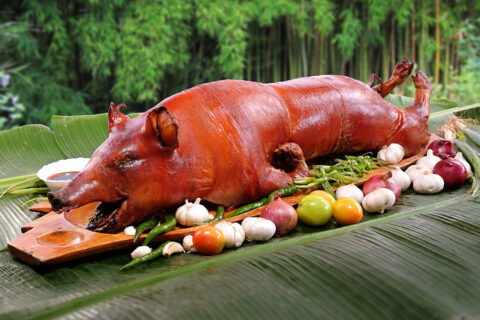
Adobo refers to stewing meat in vinegar, bay leaf, and peppercorns. Depending on the region, the meat in adobo may vary from chicken to beef, or even squid.

Pancit (or pansit) is a noodle dish that often consists of soy sauce and various vegetables and meats. It is normally cooked in a wok which is a Chinese pan that has a deep bowl-like bottom.
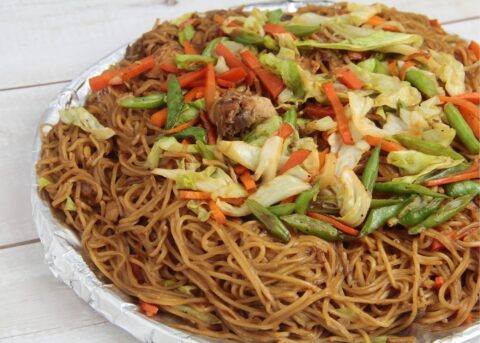
Sinigang is a sour soup with vegetables and meat in it. The meat and the sour ingredients can vary. Pork, beef, shrimp, and salmon occur most frequently for meat. The souring ingredient is normally some kind of sour fruit or leaf in that region. Calamansi, libas, and lemons are examples of some of the sour fruits used.
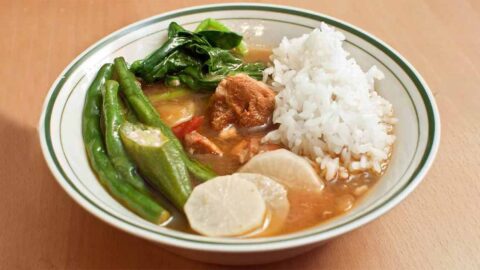
Sisig is one of the most popular foods. It is derived from the word “sisigan,” which means “to munch on something sour” (Tee). It is a plate of chopped-up vegetables and meat marinated in something sour. It is very popular at parties and restaurants.
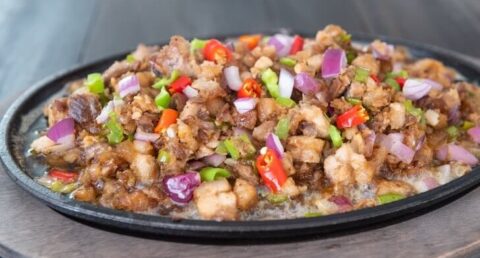
As stated before, all dishes use different ingredients based on the region where Filipinos came from and where they live today. Food is very adaptable for Filipinos because it is an expression of love and affection for the people around them. Instead of using words to express their feelings of affection, Filipinos use acts of service and food to show it. Instead of just asking “How are you?” to learn about your day, Filipinos prefer to ask, “Did you eat yet?” and spend quality time with you over a home-cooked meal (Lo). To them, food is not only nourishment. It is an opportunity to express love and spend quality time with the people around them. Therefore, Filipinos adapt their cooking not just because of a location’s access to different ingredients, but also to suit the tastes of the people they want to share it with. For the people of the Philippines, celebrating the holidays with food is a way to not only connect back with their history and country, but to the people and world around them. In other words, it is their small and genuine way of expressing peace on earth and goodwill to men.

A very special THANK YOU to Paige Slatton for contributing this blog post!

